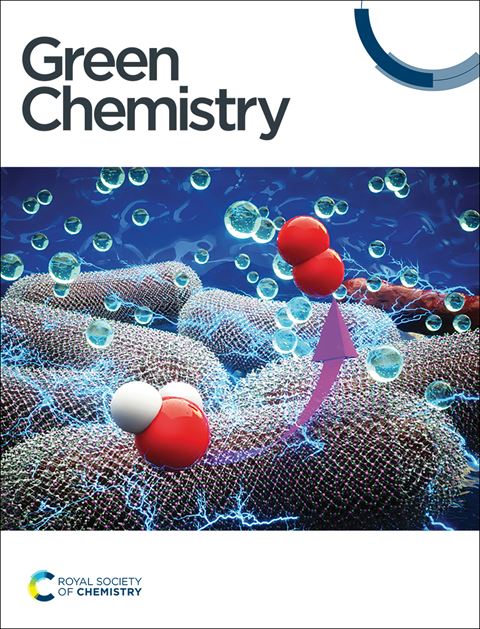Synergism between the gradient dilution work function and the Janus electronic state of Pt-CoPxBr1−x for boosting alkaline seawater electrolysis†
IF 9.3
1区 化学
Q1 CHEMISTRY, MULTIDISCIPLINARY
引用次数: 0
Abstract
The hydrogen spillover (HSo) effect of metal-supported electrocatalysts via electronic interactions can remarkably influence their performance in the hydrogen evolution reaction (HER). It needs electron-rich supporting metals to promote the adsorption/spillover of protons. However, this electron-enrichment region on metals will make the HSo-HER course contradict the electron-donating oxygen evolution reaction (OER), particularly in proton-poor alkaline seawater electrolytes. Herein, we have demonstrated the gradient dilution work function (Φ) of a Pt-CoPxBr1−x nanocone via the introduction of Br and rich P vacancies, and the Pt atoms are confirmed with Janus electron-deficient and electron-rich states in the interface and tip regions by the lightning-rod effect, which promotes the HSo-HER course and OER course. As a result, Pt-CoPxBr1−x exhibits outstanding HER and OER activities in alkaline seawater solution, also displaying a low cell voltage. This work emphasizes that synergies between gradient regulation Φ and the Janus electronic state are fundamental in rationalizing efficient metal–support alkaline seawater electrocatalysts.

梯度稀释功函数与Pt-CoPxBr1−x Janus电子态协同促进碱性海水电解†
金属负载电催化剂通过电子相互作用产生的氢溢出效应会显著影响其析氢反应的性能。它需要富电子的支撑金属来促进质子的吸附/溢出。然而,金属上的电子富集区会使HSo-HER过程与供电子析氧反应(OER)相矛盾,特别是在质子匮乏的碱性海水电解质中。本文通过引入Br和富P空位,证明了Pt- copxbr1−x纳米锥的梯度稀释功函数(Φ),并且通过雷火棒效应在界面区和尖端区证实了Pt原子的富电子和缺电子态,促进了HSo-HER过程和OER过程。结果表明,Pt-CoPxBr1−x在碱性海水溶液中表现出优异的HER和OER活性,并表现出较低的电池电压。这项工作强调了梯度调节Φ和Janus电子态之间的协同作用是使高效的金属支撑碱性海水电催化剂合理化的基础。
本文章由计算机程序翻译,如有差异,请以英文原文为准。
求助全文
约1分钟内获得全文
求助全文
来源期刊

Green Chemistry
化学-化学综合
CiteScore
16.10
自引率
7.10%
发文量
677
审稿时长
1.4 months
期刊介绍:
Green Chemistry is a journal that provides a unique forum for the publication of innovative research on the development of alternative green and sustainable technologies. The scope of Green Chemistry is based on the definition proposed by Anastas and Warner (Green Chemistry: Theory and Practice, P T Anastas and J C Warner, Oxford University Press, Oxford, 1998), which defines green chemistry as the utilisation of a set of principles that reduces or eliminates the use or generation of hazardous substances in the design, manufacture and application of chemical products. Green Chemistry aims to reduce the environmental impact of the chemical enterprise by developing a technology base that is inherently non-toxic to living things and the environment. The journal welcomes submissions on all aspects of research relating to this endeavor and publishes original and significant cutting-edge research that is likely to be of wide general appeal. For a work to be published, it must present a significant advance in green chemistry, including a comparison with existing methods and a demonstration of advantages over those methods.
 求助内容:
求助内容: 应助结果提醒方式:
应助结果提醒方式:


